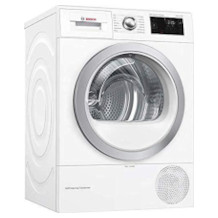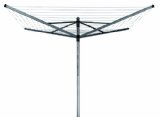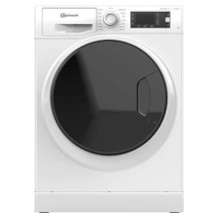Top load washing machine purchasing advice: how to choose the right product
- What You Need to Know
- Top-loading washing machines are narrow and tall, so they also fit into small bathrooms.
- Since top-loading washing machines are loaded from above, there is no need to bend down.
- The drum size should be selected depending on the number of people living in the household or the average amount of laundry.
- Depending on the type of laundry, certain additional functions such as a wool or cold wash programme are worthwhile.
Top-loading washing machines: The space wonders
There are two basic types of washing machine. Top-loading washing machines are less well-known, but they offer some advantages over the more common front-loading machines. For example, top-loading washing machines are much narrower than front-loading washing machines because of their smaller capacity.
Although their narrower design leaves less space for technology and mechanics than front-loading washing machines, top-loading washing machines clean laundry just as thoroughly as the larger front-loading models. Top-loaders are also in no way inferior to the ‘big’ front-loaders when it comes to function and programme selection. If you are considering a top-loader, you should take a close look at the functions of the new appliance when buying a washing machine, because there are some differences between the various manufacturers and models. If, for example, you frequently wash woollen garments, a washing machine with a wool wash programme is worthwhile.
Top integrated: Washing machines are part of the household
According to the Federal Statistical Office, 96.4 percent of German households had access to a washing machine in 2017. With a multitude of functions and programmes for a wide variety of textiles, washing machines have captured the hearts of consumers: insert laundry, add detergent, select programme, press start button. The water rushes into the machine and the drum begins to rock. After 30 minutes – in some programmes the washing process takes more than an hour – the magic is over: the laundry is spotless, smells fresh and only needs to dry. But there are solutions for this too: With a tumble dryer, the laundry dries in the same amount of time every day of the year.
Alternatives to (your own) washing machine
The washing methods of our great-grandmothers, such as the laborious pounding of laundry in a hot tub, have long since been forgotten. Today, even delicate fabrics such as silk and wool can be washed by hand in a professional washing machine.
But not everything fits into the drum of the regular washing machine: the runner from the hallway or the large duvet bedspread with filling have to be washed in commercial washing machines with a larger drum, also known as “carpet washing machines”. Not only the washing drum, but also the technology of the commercial washing machines is designed for the load of particularly heavy washing items. Going to a launderette or professional dry cleaner bypasses (hand) washing in your own bathroom. Some dry cleaners take on their customers’ normal laundry in addition to special jobs for stain removal. However, the service is more expensive than do-it-yourself washing at the launderette.
Laundromat or washing machine?
Your own washing machine does need a floor space, a water connection and a power socket. Then there are the purchase, operating and maintenance costs. But compared to a laundrette, having your own washing machine has many advantages. For example, laundrettes are usually only found in cities. In addition, there is always the cost of travelling to the respective location. Finally, the total costs in laundrettes are much higher.
A comparison of types
In the manufacturers’ product descriptions, a distinction is made according to “door opening type”, or more precisely “front loader” or “top loader”. In the case of the front loader, the machine is loaded from the “front”, whereas in the case of the top loader, the opening is located on the top of the machine. The control panel is also located there.
Front-loading washing machines
Front-loaders lead the washing machine market with a market share of almost 90 percent. For the consumer, this results in a wide variety of models. A typical feature of the front-loader is the “porthole”, i.e. the round door with glass insert at the front, behind which the stainless-steel washing drum flashes. To load the front loader, users have to bend down or get on their knees. For people with limited mobility, this can definitely be a disadvantage. The larger housing of the front loader houses more technology, such as wash programmes and functions, than the spatially smaller top loader. The top of the front-loading washing machine also serves as a storage surface and is built sturdily enough so that a tower-type dryer can be placed on it.
The washing drum of a front-loader is often larger (six to nine kilograms) than that of a top-loader (six or seven kilograms maximum). Due to its design, the front-loader machine runs more quietly and with less vibration than the top-loader version. However, the suds are in constant contact with the rubber seal of the porthole during the washing process. Therefore, the front loader is generally more prone to leakage than a top loader. If the water level behind the porthole is high, it is accordingly not possible to open the front loader during washing because the door opening is blocked.
Dimensions of the front loader
The dimensions of a front loader are usually 60 centimetres (width) x 60 centimetres (depth) x 85 centimetres (height). This means that the width and depth of front loaders correspond to the standard dimensions of kitchen base units. Kitchen worktops are usually fitted at a height of 85 centimetres. With many models, height adjustments of a few centimetres can be made by removing the top panel or by turning out the feet.
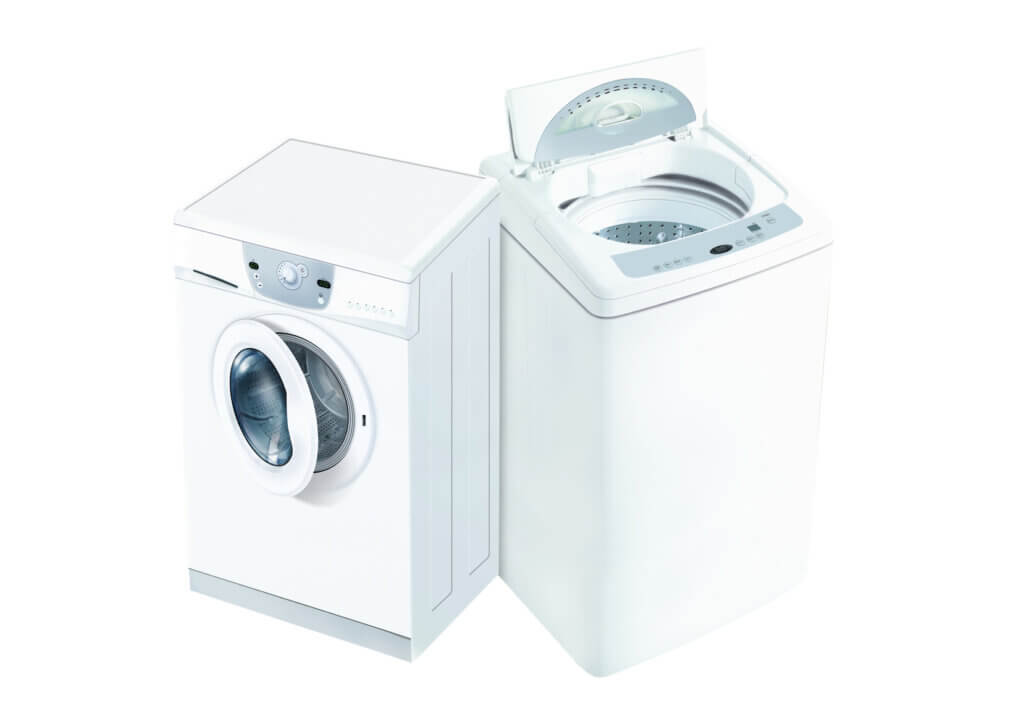
Surface-mounted and under-mounted front-loading washing machines
Most front-loading washing machines are both surface-mounted and under-mounted. Surface-mounted machines are floor-standing units that can be freely placed anywhere. The surface-mounted front-loader cannot be integrated into the kitchen base cabinets, but stands equally and independently between the base cabinets of the kitchen unit. Bottom-loading appliances, on the other hand, fit into the base units of the kitchen unit. The depth and width of the top loaders match the cabinet dimensions of the kitchen base units. For undercounter installation, front-loading appliances are slightly lower in height because they are located under the kitchen worktop. If the cover on the top of the top-loading appliance can be unscrewed, it can also be installed underneath.
Pro Points
- Can be built on or under
- Capacity from 6 to 9 kilograms
- Wide range of wash programmes
- Quiet operation
- Storage space on the top
- Wide choice of models
- Wider than the top loader
Drawbacks
- Too big for small bathrooms
- Loading and unloading in a stooped position
- No interruption of the washing programme possible
- High water level above the door makes leakage possible
Top-loading washing machines
Front-loading washing machines may be technically superior, but top-loaders also have a lot to offer. With their much narrower design and the control panel on the top, top-loading washing machines have a decisive advantage over front-loaders. This means they also fit into niches that are too small for regular models. However, the choice of a top loader may also have mobility reasons. After all, loading and unloading laundry from the top of a top loader is done comfortably while standing.
Top loaders are also more leak-proof than front loaders, because the water level does not reach the top loading opening. This means that top-loaders can easily meet the need to open the washing machine again after starting, for example to remove silk laundry from the boil programme.
In top-loaders, the washing drum hangs horizontally in the housing and rotates vertically. Users of top-loaders hardly ever experience problems due to imbalance. Only in terms of smoothness and noise development do top-loaders sometimes have to make concessions. This is due to the fact that the narrow stand width can lead to louder noises and stronger vibrations during fast wash and spin cycles with heavy loads.
Top-loader dimensions
Top-loading washing machines are usually 40 to 45 centimetres wide. Depending on the height, top loaders can also be integrated into a kitchen unit. The feet of almost all top-loaders are adjustable. However, they cannot be underbuilt, as they are loaded from the top. The flap of the top loader is also not loadable, which is why it cannot be used as a storage surface. If cupboards hang above the top loader’s storage space, a distance of at least 40 centimetres must be maintained so that users can still load the washing machine.
Pro Points
- Narrow width (30 to 55 centimetres)
- Fits in narrow bathrooms
- Can be loaded standing up
- Can be opened during washing
- Leak-proof
- Double drum bearing with long life
Drawbacks
- Not suitable for undercounter installation
- Top side must remain free (no shelf space)
- Smaller capacity
- More unsteady running
- Less variety of models
What matters when buying
To ensure that the new top-loading washing machine is a perfect fit for your household, prospective buyers should take the following criteria into account when making their decision:
- Capacity (nominal capacity or drum size in kilograms)
- spin speed
- Washing programmes
- special functions
- volume
- Safety features
- the energy efficiency class
The drum size
With a nominal capacity of six kilograms, users can wash six kilograms of dirty laundry per wash cycle. The nominal capacity indicates how many kilograms of dry laundry can be loaded into the drum. Top-loaders can be loaded with five to six kilograms (for 40-centimetre appliances) or up to seven kilograms (for 45-centimetre appliances). The maximum capacity can be found in the operating instructions for the appliance.
Usual drum capacities for the larger front-loaders are six to nine kilograms; commercial washing machines are loaded with 12 kilograms and more. But beware: overloading washing machines leads to the appliance jamming, damage to electronics and mechanics, and unsatisfactory washing results. The following comparative values provide a guide for choosing the drum size:
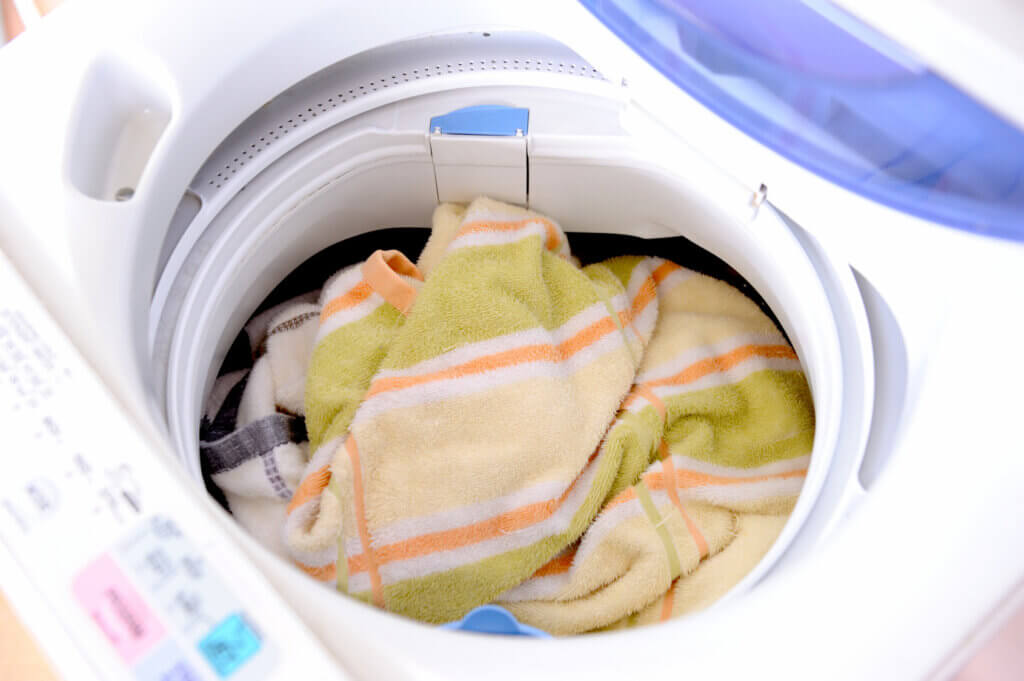
- Five kilo drum volume: one to two persons
- Six kilo drum capacity: three to four persons
- Seven kilo drum capacity: more than four persons
The optimal wash load
If the laundry basket is the same size as the washing drum, washing is done with an optimum load. This also saves energy.
High speed, fast spin cycle
The spin class (spin efficiency class) indicates how much residual moisture is contained in the laundry after spinning.
Spin class A: residual moisture below 45 percent
Spin class B: residual moisture below 54 percent
Spin class G: Residual moisture over 90 percent
The faster the spin, the higher the speed must be. Laundry spun at very high speed is drier after the wash cycle, i.e. it has less residual moisture. Spin class A works with high revolutions so that the residual moisture of the garment is as low as possible. A wash cycle with spin class G is recommended for very delicate fabrics such as wool or silk – if they are to be spun at all. Not all fabrics can tolerate very high spin speeds: Fabrics become limp, clothes become loose and lose their shape.
Washing programmes
The standard wash programmes include “synthetics” (polyester and nylon), “cotton” and “wool” or “silk”. The wash programme determines, for example, how often the washing drum moves, whether soaking takes place and, finally, how fast spinning takes place. In addition to the technical washing process, the washing temperature is also regulated. Washing temperatures are 30, 40, 60 and 90 or 95 degrees. Most machines also offer a cold wash programme.
Special functions
Washing machines with automatic load control automatically recognise the weight of the load and adjust the water consumption and sometimes even the programme runtime. A start-time preselection is also practical if, for example, consumers want to use night power or hang the laundry out to dry early in the morning.
Energy label and annual consumption
With the European Union’s energy consumption labelling, every top-loader also receives its energy efficiency class, or energy label for short. On the label, manufacturers indicate how much energy the appliance consumes. The higher the energy efficiency class, the lower the annual electricity consumption. The energy efficiency class A+++ consumes correspondingly less electricity than the appliance with the energy label A++.
Care and maintenance
After washing and cleaning, the door or cover of the top-loading washing machine should be left open to allow the interior and the seals to dry completely and to prevent odours from forming in the machine. A washing machine requires minimal maintenance as it cannot really get dirty during all the washing cycles. However, the lint filter and rubber sleeves need to be kept an eye on. As with all water-operated appliances, washing machines also need to be decalcified regularly.
Descaling the appliance
Technical defects in electrical appliances are a case for the specialist. Regular descaling of the washing machine helps to keep repair costs under control. A calcified machine consumes up to 30 percent more electricity. If the laundry is no longer properly clean, this can also be due to calcification. If the heating elements are calcified, they can no longer generate the desired water temperature.
This is how descaling works:
- Put descaler in the detergent compartment or directly into the drum with the washing ball.
- Set the highest temperature (90 degrees boil wash).
- Start the wash cycle with an empty machine.
- During the wash cycle, set the machine to “soak” or stop it.
Cleaning the rubber seals
Limescale and dirt build up on the rubber seals. Small change and small items left in trouser and jacket pockets get caught in the rubber cuff, which is located between the door and the cabinet. Accordingly, the cuff must be wiped out and dried after every wash. Chemical cleaning agents are taboo here – the cuff is cleaned again by the washing powder of the next wash cycle anyway.
Cleaning the detergent drawer
In a top-loading washing machine, the detergent drawer is on the inside. Since not all the detergent is dissolved during the wash cycle, the residue can become encrusted on the plastic of the detergent drawer. To clean, users remove the drawer and clean it under running water or soak it until the detergent is completely dissolved.
Cleaning the lint filter
If the laundry or machine smells unpleasant after washing, this may be due to a blocked fluff filter. The fluff filter is located behind a flap in the housing near the bottom. Larger fibres get caught in the lint filter; even small pieces of fabric can end up there. If the filter is clogged, some models block the door, other machines display error messages. To prevent this from happening in the first place, it is advisable to clean the lint filter once or twice a year. When you open the filter cover, some residual water usually comes out of the drain hose. The lint filter can be unscrewed and cleaned under running water.
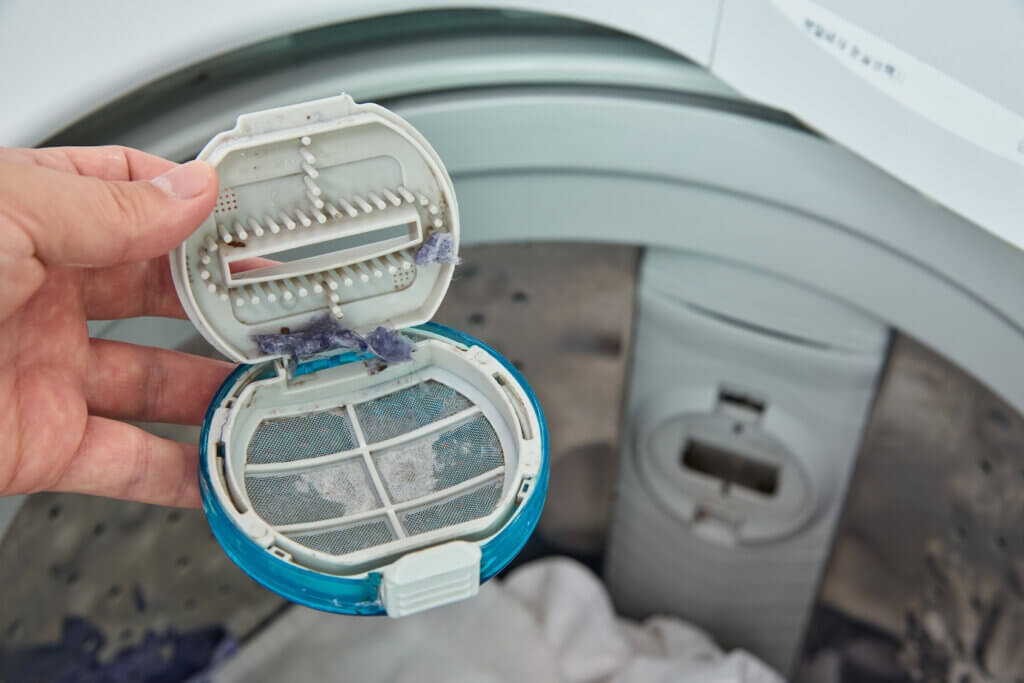

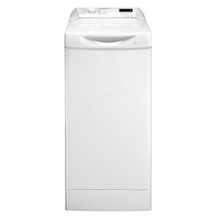
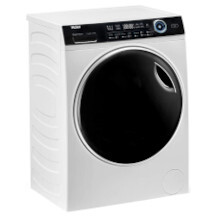
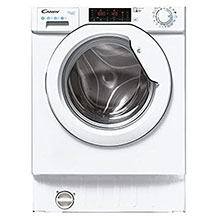
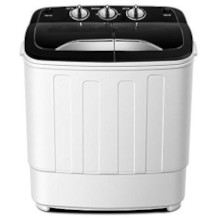
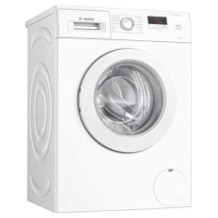






 11 reviews
11 reviews
